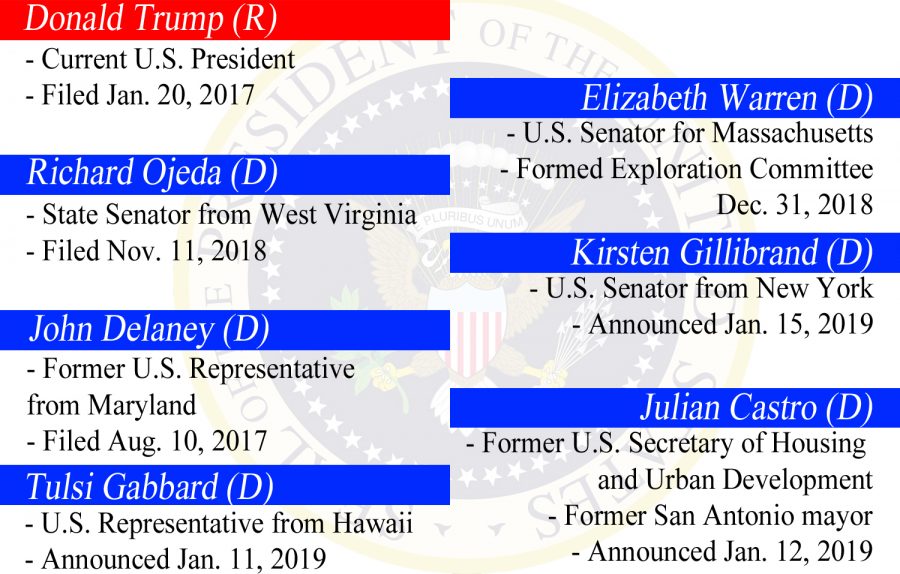Looking forward with 2020 vision
Presidential hopefuls announce candidacy nearly two years ahead of election
Every year, elections happen all across America. From small townships to bustling cities, people vote for positions that vary in impactfulness. Last presidential election in 2016, 79,136 Beaver County voters turned in their ballots for the presidential election, where Republican Candidate, now President of the United States, Donald Trump took 58.3 percent of the vote and Democrat Candidate Hillary Clinton took 38.2 percent of the vote. Coming up next year is the same big election: 2020 presidential.
Looking ahead, the 2020 election will occur on Nov. 3, 2020, and the winning candidate will be inaugurated on Jan. 20, 2021. For the next election, the United States census predicts 265.5 million Americans will be older than 18 years old, meaning that many will Americans will be eligible to vote, forbidding any interference. This is an increase of about 9.5 million eligible voters from the previous election.
In order for a candidate to run for the presidential office, they must first file their candidacy with the Federal Election Committee (FEC). Trump filed his intent to run for reelection on the same day he was inaugurated for his first term, Jan. 20, 2017. Since then, he has held several rallies across America and has begun airing television and online ads. So far, no other Republicans have challenged Trump for the Republican nomination.
On the Democratic side of things, a few people have announced their candidacy or formed an exploratory committee, as of Jan. 20. An exploratory committee is established by a potential candidate to decide if the person should or should not run for office. Massachusetts Senator Elizabeth Warren announced the formation of an exploratory committee on Dec. 31, 2018. Former U.S. secretary of housing and urban development and San Antonio Mayor Julian Castro announced the formation of an exploratory committee on Dec. 12 and filed his candidacy with the FEC a week later. He made a formal announcement for his candidacy on Jan. 12. Also on the candidacy list are West Virginia state senator Richard Ojeda, filing on Nov. 11, and U.S. representative from Maryland John Delaney, who filed his candidacy on Aug. 10, 2017.
On a side note, U.S. Senator from Pennsylvania Bob Casey passed the bid for candidacy on Jan. 18.
“After two months of considering it, I have concluded that the best way for me to fight for the America that so many of us believe in is to stay in the U.S. Senate and not run for the presidency in 2020,” Casey said.
Besides from main candidates, over 400 people have filed with the FEC their presidency candidacy. Though registered, it doesn’t always mean that they intend to run. For instance, a man by the name of “Professor Earnest Lee Easton, Esquire” registered his candidacy on July 21, 1998, under the Veterans Industrial Political party. A majority of these people will never have their names on ballots across America, but they can always hope for a future where that occurs.
Though still a ways off, campaigning now could potentially lead candidates to reach more potential voters and get their name out there. Every vote matters in an election as big as president and as local as a member of the school board.



